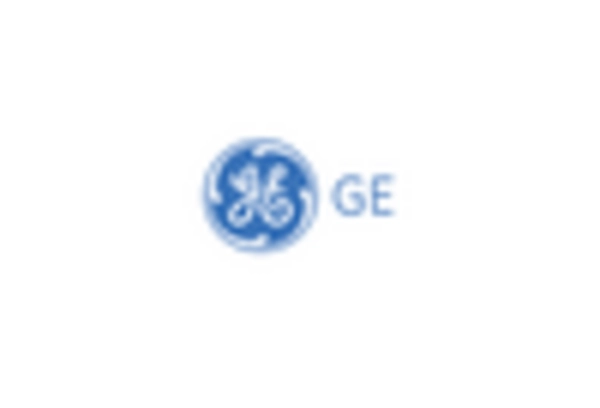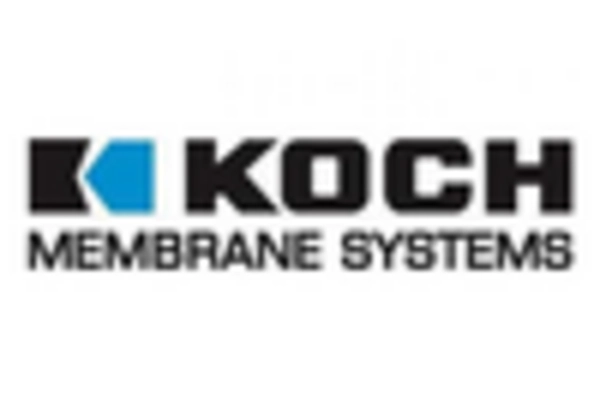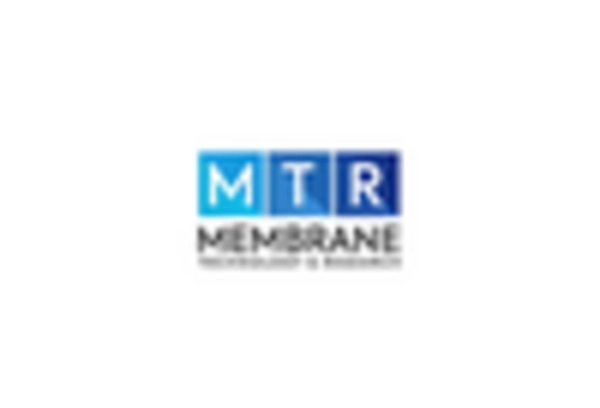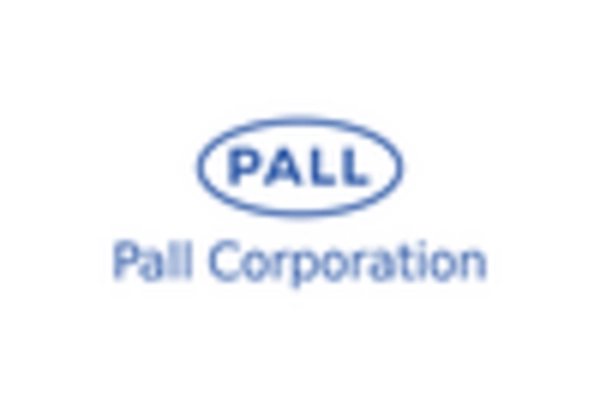Growing Focus on Energy Efficiency
The emphasis on energy efficiency is increasingly influencing the Membrane Separation Technology Market. As energy costs rise and environmental concerns mount, industries are seeking solutions that minimize energy consumption while maintaining high performance. Membrane technologies are inherently energy-efficient compared to traditional separation methods, making them an attractive option for various applications. Data suggests that the energy-efficient nature of membrane processes is likely to drive their adoption across sectors such as desalination and wastewater treatment. This trend highlights the potential for the Membrane Separation Technology Market to expand as organizations prioritize sustainability and cost-effectiveness in their operations.
Rising Demand for Water Treatment Solutions
The increasing The Membrane Separation Technology Industry. As populations grow and industrial activities expand, the need for effective water treatment solutions becomes more pressing. Membrane technologies, such as reverse osmosis and ultrafiltration, are increasingly utilized to purify water and remove contaminants. According to recent data, the water treatment segment is projected to account for a substantial share of the market, driven by stringent regulations on water quality and the need for sustainable practices. This trend indicates a robust growth trajectory for the Membrane Separation Technology Market, as municipalities and industries seek efficient and reliable methods to ensure safe drinking water.
Regulatory Support and Environmental Policies
Regulatory frameworks and environmental policies play a crucial role in shaping the Membrane Separation Technology Market. Governments worldwide are implementing stringent regulations aimed at reducing pollution and promoting sustainable practices. These policies often encourage the adoption of advanced separation technologies, including membranes, to meet environmental standards. For example, regulations on wastewater treatment and emissions control are driving industries to invest in membrane solutions. As a result, the Membrane Separation Technology Market is likely to benefit from increased funding and support for research and development initiatives aimed at enhancing membrane performance and efficiency.
Industrial Applications and Process Optimization
The Membrane Separation Technology Market is significantly influenced by its diverse applications across various industrial sectors. Industries such as food and beverage, pharmaceuticals, and chemicals are increasingly adopting membrane technologies to enhance process efficiency and product quality. For instance, in the food industry, membrane filtration is employed for concentration and clarification processes, leading to reduced energy consumption and improved yield. Market data suggests that the industrial segment is expected to witness substantial growth, as companies strive to optimize their operations and reduce waste. This trend underscores the importance of membrane technologies in driving innovation and sustainability within the Membrane Separation Technology Market.
Technological Innovations and Research Advancements
Technological innovations are a key driver of growth in the Membrane Separation Technology Market. Ongoing research and development efforts are leading to the creation of advanced membrane materials and configurations that enhance separation efficiency and reduce operational costs. Innovations such as nanofiltration and membrane bioreactors are gaining traction, offering improved performance in various applications. Market analysis indicates that the introduction of these cutting-edge technologies is expected to propel the Membrane Separation Technology Market forward, as industries seek to leverage the latest advancements to improve their processes and meet evolving consumer demands.


















Leave a Comment